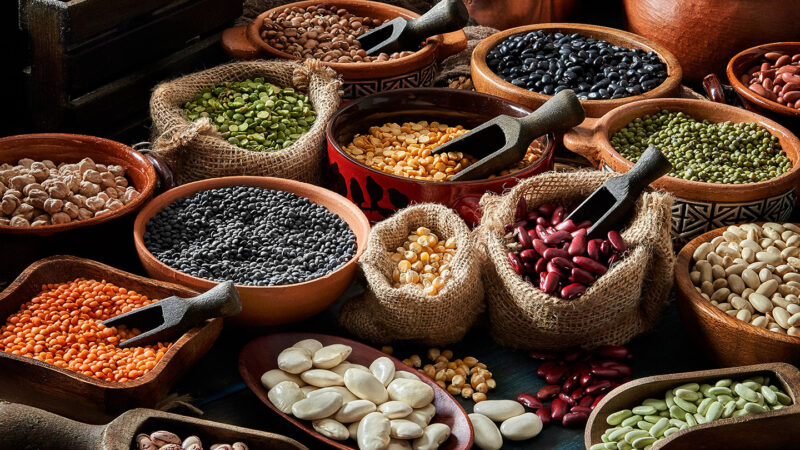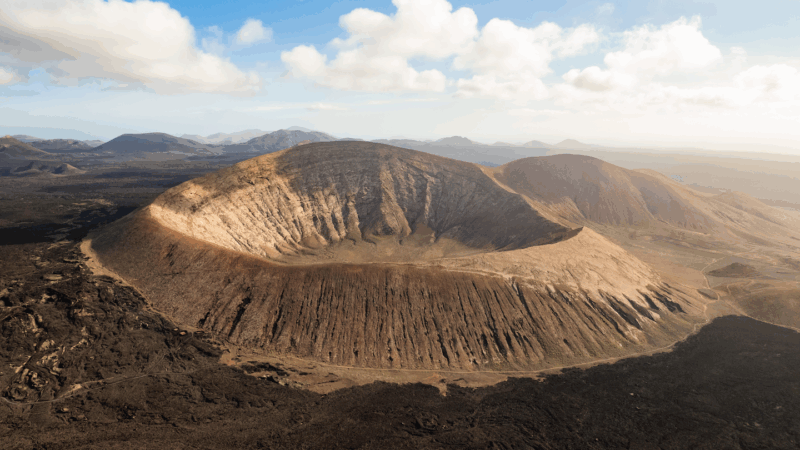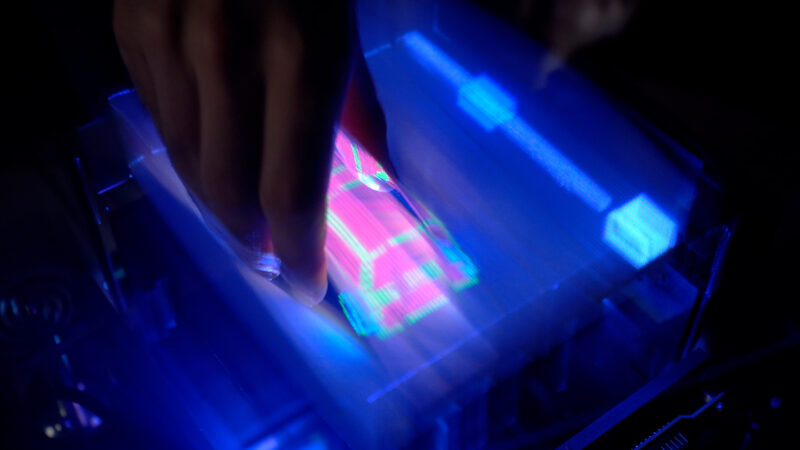If you’ve ever picked up an acorn from an oak tree or scooped out the inside of a pumpkin, you’ve held in your hand the makings of a giant tree or a whole pumpkin patch. Seeds come in all colors, shapes and sizes, from a tiny poppy seed to a giant coconut. Each one is a factory that has everything it needs to start making another plant.
Many plants produce flowers, which develop into fruits, beans or grains. The seeds of flowering plants are made up of three parts. There’s the baby plant, or embryo. Then there’s the endosperm. This is a packet of food the embryo will use as energy to grow until it has leaves and can make its own food. These two parts are encased inside a seed coat. This hard, protective layer keeps the embryo safe until it’s ready to sprout.
When there’s enough water and sunlight and the temperature is just right, a seed sprouts its first root and shoot.SpicyTruffel/iStock/Getty Images Plus
Seeds can sense when conditions are right to grow. There must be enough water and sunlight. The temperature must be just right, too. Then, the seed coat absorbs water, softens and cracks open. A tiny root called a radical grows down into the soil. The first shoot or stem — called a plumule — grows up toward the sunlight.
Learn what it takes a seed to start growing, a process known as germination. It’s a lot less than you probably realize.
But how do roots and shoots know which direction to grow?
Like us, plants sense gravity. The cells of their roots and shoots contain small packets of starch granules. Those packets are heavy, so they settle at the bottom of cells. That tells a plant which way is down, explains Anna Newman-Griffis. She studied plant biology and now teaches at Durham University in England.
Root cells are programmed to grow down toward the pull of gravity. This is called positive gravitropism. Shoot cells have negative gravitropism. That tells them to grow upward, against the pull of gravity.
Small packets of starch in a plant’s cells help it sense gravity. Roots grow toward gravity. This is called positive gravitropism. Shoots or stems grow away from gravity. That is called negative gravitropism. agung fatria/iStock/Getty Images Plus
Making plants out of air molecules
Most plant growth takes place at the tips and along the sides of roots and shoots. These regions are called meristems. They have unspecialized cells — sometimes called stem cells. These can become any kind of cell a plant needs. For example, stem cells can make new epidermal cells for protection if a shoot is injured. Or they can become root cells to seek out water deeper in the soil. Plants use cues from inside and outside their body to know when cells should divide and what type of cells to make.
Adding new cells can make a plant longer or thicker. They can build branches, flowers or leaves. They also build a plant’s transport system. Its xylem carries water absorbed by roots throughout the plant. The system’s phloem transports sugar, the plant’s food.
Explainer: How photosynthesis works
Like animals, plants need energy from food to grow. But plants don’t eat, says Newman-Griffis. Instead, they make their own food through photosynthesis.
Plants pull carbon dioxide, or CO2, from the air into their leaves through little openings called stomata. Chloroplasts inside a leaf cell absorb energy from the sun and use it to convert CO2 and water into sugar and molecules of oxygen. This oxygen returns to the air. The sugars power all the plant’s cellular machinery. Sugars are also the building blocks for making new cells and tissues.
Basically, Newman-Griffis says, “They’re making giant trees out of air molecules.”
This video shows how a substantial part of plants are made from ingredients they pull out of the air.
Plants need other nutrients to grow properly, too. The main ones are nitrogen, phosphorus and potassium. Nitrogen helps make leaves and is important for photosynthesis. Phosphorus helps make roots, flowers, seeds and DNA. Potassium helps move water and nutrients through their tissues.
Explainer: The fertilizing power of N and P
Plant roots absorb these nutrients from the soil. They come from the breakdown of rocks and organic matter, such as dead plants and animals. All three nutrients are very common on Earth. But they exist in multiple forms, some of which plants can’t use. For instance, most nitrogen exists as a gas. Microbes in the soil help convert this gas from the air into a form plants can use. This process is called nitrogen fixation.
An adaptable body plan
Like animal cells, plant cells divide to make new cells through a process known as mitosis. But they undertake one extra step that animals don’t. In the final stage of cell division, plants build a wall around each cell. Plants don’t have bones or shells. So these rigid walls protect the cells. They also give them support and structure.
Plant growth differs from animal growth in another important way. Babies of most animals have a set body plan that already determines where the major parts of the body go, such as the head or a tail. Where its eyes sit on its head also tend to be fixed in advance. The same is true for how many limbs or appendages it will have and where they will emerge.
Plants use more general body plans. Those plans help them look like other members of their species by following instructions from their DNA. For example, the leaves of maple trees develop characteristic pointed lobes. California poppies produce distinctive flowers with bright petals. And deer grass makes long, thin leaves, called blades, that grow in a clump and sway in the wind.
Do you have a science question? We can help!
Submit your question here, and we might answer it an upcoming issue of Science News Explores
But a plant’s environment will shape its individual growth pattern and structure. Since plants can’t travel, they need different ways to deal with challenges. For example, an animal may eat parts of them. New leaves or stems may now need to grow in a somewhat different spot to capture water or sunlight. Or to cope with lots of wind.
Plants are constantly growing and adjusting their body plan, says Newman-Griffis. So, their structure may end up with funny twists, bends and turns.
The larger a plant grows — and the longer it lives — the more carbon it will have trapped in its cells. Trapping carbon is called carbon sequestration. This important process reduces the amount of greenhouse gases that build up in the atmosphere. And that plays a role in helping control Earth’s climate.
Old-growth forests are made of trees that have lived hundreds of years or more. These trees trap huge amounts of carbon in their tissues. That helps keep carbon — in the form of carbon dioxide, a greenhouse gas that contributes to climate change — from building up in the atmosphere. Oliver Strewe/The Image Bank/Getty Images Plus
The large trees in old-growth forests can live for hundreds or thousands of years. They will have trapped huge amounts of carbon in their giant bodies. Being able in this way to adapt their growth patterns and respond to challenges in their environment has helped trees become some of the oldest beings on Earth.

















